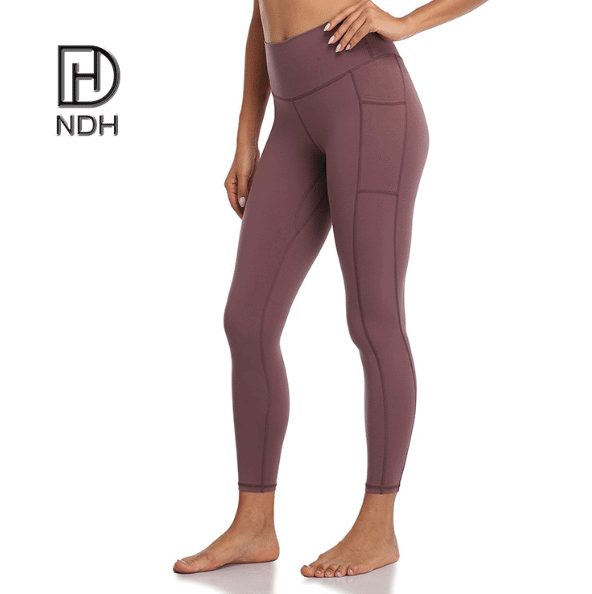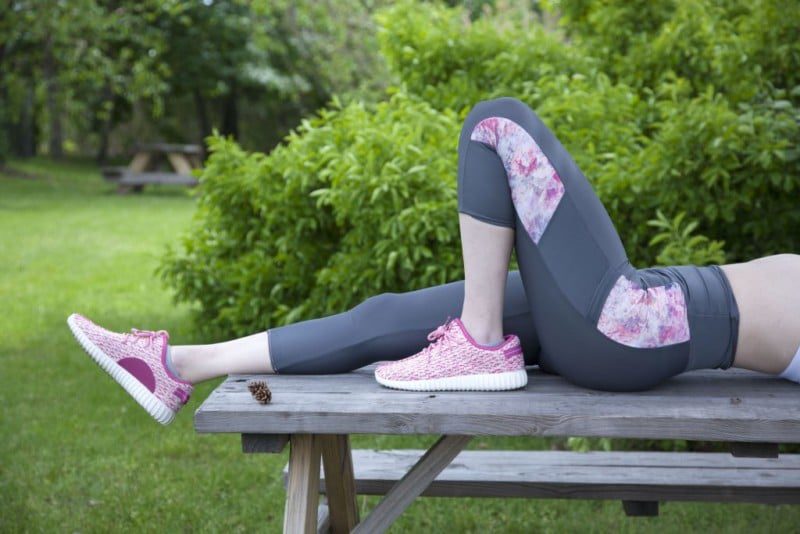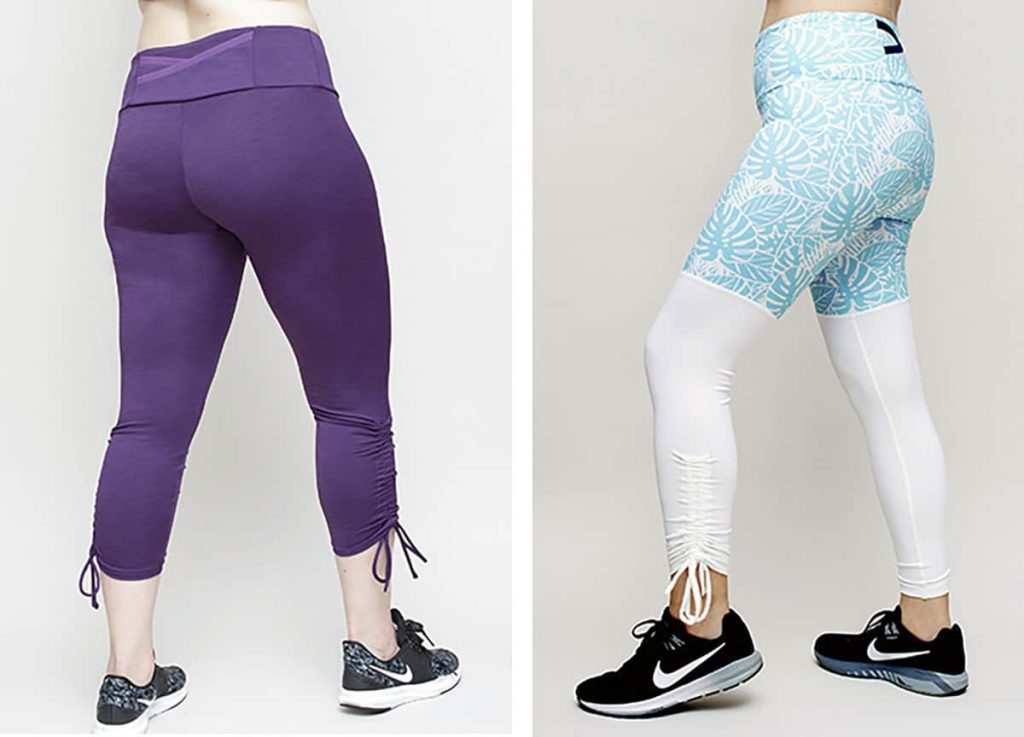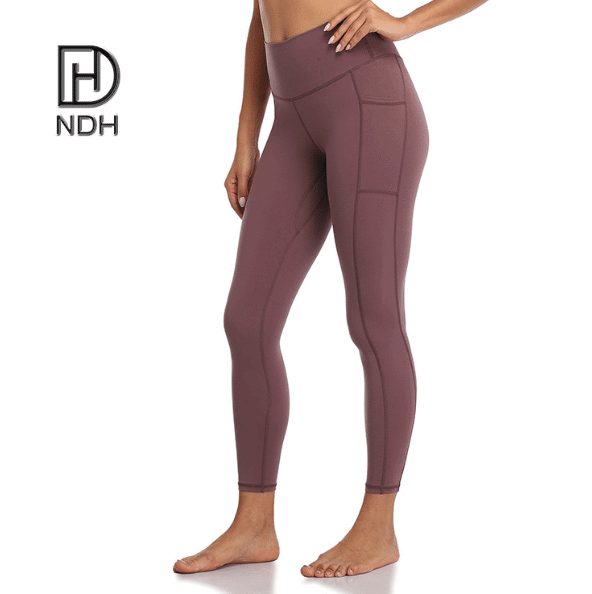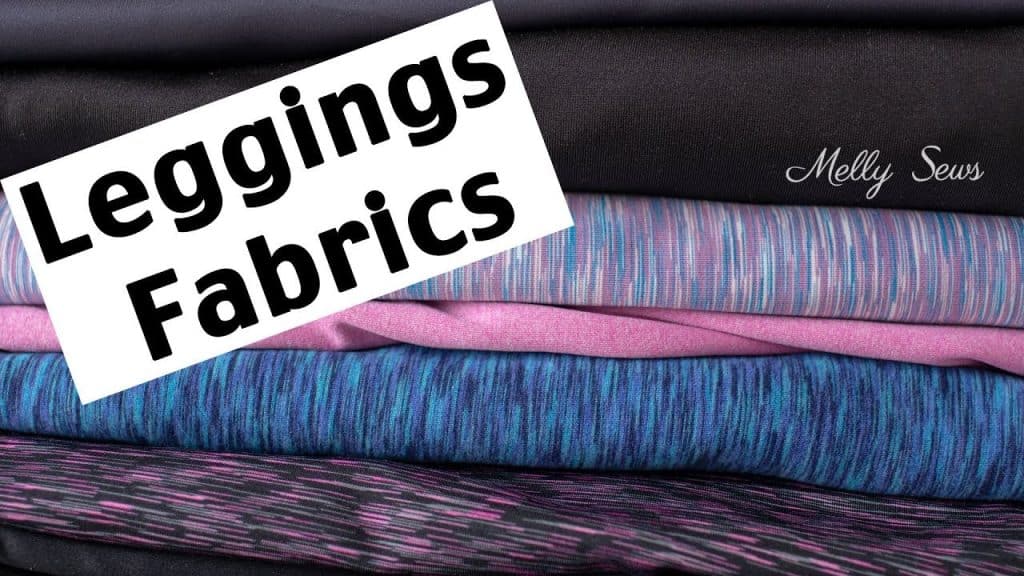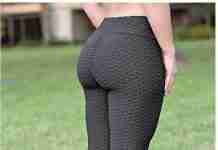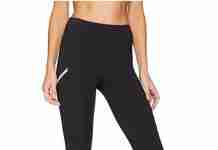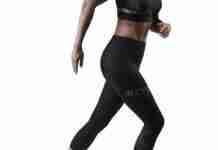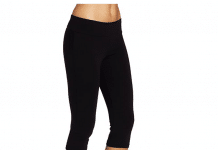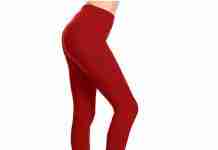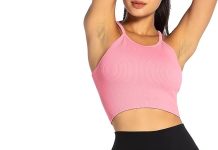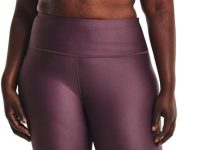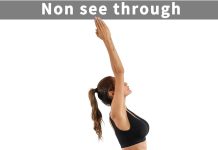Leggings have become a wardrobe staple for many, offering comfort and style in one versatile piece. But have you ever wondered about the fabrics that make leggings so comfortable and stretchy?
In this article, we explore the different types of fabrics commonly used to make leggings, shedding light on their unique qualities and helping you make the best choice for your next purchase.
From cotton’s softness to spandex’s flexibility, discover the materials that give leggings their incredible fit and feel.
Review contents
Cotton
Properties
Cotton is a widely used fabric in the garment industry, known for its soft and breathable nature. It is derived from the fibers of the cotton plant and is highly versatile. This natural fabric is durable, absorbent, and hypoallergenic, making it suitable for all skin types. Its retaining moisture also helps keep the body cool and comfortable.
Advantages
One of the primary advantages of cotton is its breathability. Its natural properties allow air to circulate freely, preventing the accumulation of sweat and odor. This makes cotton an excellent choice for leggings as it keeps the wearer dry and comfortable during workouts or daily activities. Additionally, cotton is easy to care for and can withstand frequent washing without losing its durability or shape.
Moreover, cotton is a sustainable choice as it is biodegradable and reduces environmental impact. It is also readily available and affordable, making it accessible to many consumers. Its versatility in color and design options further adds to its popularity for leggings.
Disadvantages
While cotton has numerous advantages, there are a few disadvantages to consider. One of the significant drawbacks is its tendency to shrink when exposed to heat, especially during repeated washes. To prevent this, it is essential to carefully read and follow the laundering instructions provided for cotton garments. Additionally, cotton may wrinkle easily, requiring ironing to maintain a neat appearance.
Another limitation of cotton is its moisture absorption, which can lead to a heavy and clingy feel when exposed to excessive sweat or humidity. This characteristic may not be ideal for high-intensity workouts or during hot weather, as it can restrict movement and cause discomfort. Furthermore, cotton may take longer to dry than synthetic fabrics, which can be inconvenient for those who prefer quick-drying materials.
Polyester
Properties
Polyester is a popular synthetic fabric widely used in the textile industry. It is made from polymer fibers that are derived from chemical processes. Polyester is known for its exceptional durability and resistance to stretching, shrinking, and wrinkles. It is also lightweight and quick-drying, making it suitable for athletic activities.
Advantages
One of the main advantages of polyester is its excellent durability. It can withstand frequent washing and retains its shape and color well, making it a long-lasting option for leggings. Polyester is also highly resistant to shrinkage and stretching, providing a consistent fit even after extended use. Additionally, it is wrinkle-resistant, eliminating the need for ironing and ensuring a neat appearance.
Polyester’s quick-drying properties make it an excellent choice for leggings, especially for those engaging in intense workouts or for athletes. It efficiently wicks away moisture, allowing sweat to evaporate quickly, keeping the body dry and comfortable. This feature is particularly beneficial during hot and humid conditions.
Disadvantages
Despite its positive characteristics, polyester also has a few disadvantages. One notable drawback is its limited breathability compared to natural fibers like cotton. Polyester fabric does not allow air to pass through as quickly, which can lead to sweat accumulation and discomfort during prolonged wearing. It may not be the best choice for sensitive skin or those who sweat heavily.
Another disadvantage of polyester is its potential to develop a static charge, resulting in clinginess and discomfort. This issue can be mitigated by properly washing and drying the fabric, using dryer sheets, or opting for anti-static treatments. Additionally, some people may find the feel of polyester less comfortable compared to natural fabrics.
This image is the property of www.moodfabrics.com.
Nylon
Properties
Nylon is a synthetic fabric made from petroleum-based fibers. It is known for its exceptional strength and resilience, making it a popular choice for various applications in the textile industry. Nylon is lightweight, smooth, and has a low moisture absorbency rate.
Advantages
One of the critical advantages of nylon is its strength and durability. It is highly resistant to wear and tear, making it suitable for intense physical activities and workouts. Nylon fabric retains its shape well and does not stretch or sag easily, ensuring a snug and supportive fit for leggings. Moreover, its smooth texture feels comfortable against the skin.
Nylon’s low moisture absorbency rate allows it to dry quickly, reducing the chances of discomfort caused by sweat accumulation during workouts or hot weather. It also resists wrinkles, making it a low-maintenance choice for leggings. Additionally, nylon is known for its ability to hold vibrant colors, making it ideal for leggings with intricate designs or patterns.
Disadvantages
While nylon offers many advantages, it also has certain disadvantages. One significant drawback is its lack of breathability. Nylon does not allow air to pass through easily, which can lead to heat and moisture buildup, causing discomfort and excessive sweating. This limitation may make it less suitable for individuals prioritizing breathability in their leggings.
Another disadvantage of nylon is its relatively high environmental impact. As a petroleum-based fabric, its production and disposal can contribute to carbon emissions and pollution. However, advancements in manufacturing processes are continually being made to reduce the environmental impact of nylon.
Spandex
Properties
Spandex, also known as elastane or Lycra, is a synthetic fabric known for its exceptional elasticity. It is made from polyester and polyurethane, making it highly stretchable and form-fitting.
Advantages
The primary advantage of spandex is its remarkable stretchability. It can be stretched several times its original length and quickly regain shape when released. This property makes spandex an essential component in leggings, providing excellent freedom of movement and flexibility. It ensures a snug and supportive fit, allowing the leggings to adapt to the body’s contours.
Spandex is also resistant to wrinkles and shrinkage, retaining its shape even after repeated use and washing. Additionally, it is a lightweight fabric that allows for breathability and moisture-wicking, making it suitable for both casual wear and high-intensity workouts. Its ability to dry quickly further adds to its appeal.
Disadvantages
Despite its advantages, spandex also has a few disadvantages to consider. One notable limitation is its lack of breathability compared to natural fabrics like cotton. Spandex’s tight and stretchy nature can restrict airflow and trap heat, potentially leading to discomfort and excessive sweating. However, incorporating other breathable fabrics or strategic ventilation design can help alleviate these issues.
Another disadvantage is the potential for spandex to lose its elasticity over time. Extended exposure to heat, sunlight, or certain chemicals can cause the fibers to break down, resulting in reduced stretch and support. Proper care, such as avoiding excessive heat during washing and drying, can help prolong the lifespan of spandex leggings.
This image is the property of www.thelaststitch.com.
Lycra
Properties
Lycra is a synthetic fabric that is often used interchangeably with spandex. It is a brand name for elastane fiber manufactured by Invista. Lycra shares similar properties to spandex, exhibiting exceptional elasticity and stretchability.
Advantages
The advantages of Lycra are similar to those of spandex, as they both refer to the same elastane fiber. Lycra provides excellent stretch and support, allowing leggings to conform to the body’s shape and movements. This ensures a comfortable and flattering fit for various body types and activities.
Lycra’s elasticity also contributes to the durability of leggings. It helps the fabric maintain shape, reducing the risk of sagging or stretching out. This characteristic makes Lycra-enhanced leggings suitable for intense workouts, as they provide support and flexibility without compromising comfort.
Disadvantages
The disadvantages of Lycra are also similar to those of spandex. The fabric may lack breathability due to its tight and stretchy nature, potentially leading to discomfort and sweat accumulation. It is essential to consider the breathability requirements and personal preferences when choosing leggings with Lycra.
Furthermore, as with any fabric that incorporates synthetic fibers, the environmental impact of Lycra must be considered. Proper disposal and recycling of garments that contain Lycra can help reduce waste and minimize the ecological footprint.
Bamboo
Properties
Bamboo fabric is derived from bamboo pulp, a natural cellulose fiber. It is primarily composed of bamboo rayon, also known as viscose bamboo. This fabric offers unique properties, making it increasingly popular in the textile industry.
Advantages
One of the notable advantages of bamboo fabric is its exceptional softness. It has a luxurious and silky texture that feels pleasant against the skin, making bamboo leggings incredibly comfortable to wear. Bamboo fabric has natural anti-bacterial and hypoallergenic properties, making it suitable for sensitive skin.
Bamboo fabric is also known for its temperature-regulating properties. It provides excellent insulation, keeping the wearer warm in cold weather and cool in hot weather. This aspect is particularly desirable for leggings, where comfort is crucial during various activities and climates.
Furthermore, bamboo is highly sustainable and environmentally friendly. It is a fast-growing and renewable resource that requires minimal water and pesticides during cultivation. Therefore, choosing bamboo leggings contributes to a more eco-conscious wardrobe.
Disadvantages
Although bamboo fabric offers several advantages, there are a few disadvantages. One of the significant drawbacks is the intensive chemical process required to convert bamboo into a fabric. The process involves using harsh chemicals, such as sodium hydroxide and carbon disulfide, which can harm the environment and workers if not properly managed.
Another limitation of bamboo fabric is its moisture absorbency. While bamboo is highly absorbent and can wick away moisture from the body, it may not dry as quickly as synthetic fabrics. Excessive sweating or humid conditions may warrant careful consideration when selecting bamboo leggings.
This image is the property of leggingsupplier.com.
Modal
Properties
Modal is a semi-synthetic fabric made from the pulp of beech trees. It is known for its silky and smooth texture, resembling natural silk. Modal fabric offers excellent durability and breathability.
Advantages
Modal fabric has several advantages that make it suitable for leggings. Its soft and smooth texture provides a luxurious feel against the skin, enhancing comfort during wear. The fabric drapes well and allows for ease of movement, making it ideal for leggings designed for both casual and active wear.
The modal fabric also offers excellent breathability. It allows air to circulate, preventing excessive sweating and discomfort. Additionally, Modal is known for retaining colors well, making it a popular choice for leggings with vibrant or intricate designs.
Moreover, Modal is considered a more sustainable option than some synthetic fabrics. The beech trees that produce modal require less water and land than cotton, reducing its environmental impact. Modal is also biodegradable, minimizing its contribution to landfill waste.
Disadvantages
One potential disadvantage of modal fabric is its susceptibility to pilling, especially in areas of frequent friction. The use of high-quality Modal and proper care can mitigate this issue. Additionally, the modal fabric may shrink if exposed to high heat, so following the manufacturer’s care instructions is essential when laundering modal leggings.
While modal offers good breathability, it may not dry as quickly as synthetic fabrics. This characteristic may need to be considered when selecting leggings for intense workouts or activities that involve excessive sweating.
Rayon
Properties
Rayon is a semi-synthetic fabric from cellulose fibers derived from wood pulp or other plant materials. It is often a versatile alternative to natural fibers such as cotton or silk.
Advantages
Rayon fabric offers several advantages that make it suitable for leggings. Its soft and smooth texture provides a comfortable and lightweight feel against the skin. Rayon leggings drape well and allow for ease of movement, ensuring comfort during various activities.
Rayon fabric is also breathable, allowing air to circulate and prevent excessive sweating. This characteristic makes it suitable for leggings intended for use during workouts or in warmer climates. Additionally, rayon can be blended with other fibers, such as cotton or spandex, to enhance its properties and provide additional stretch or moisture-wicking capabilities.
Moreover, rayon is a relatively affordable fabric choice, making it accessible to many consumers. It is also available in various colors and patterns, offering versatility in leggings design options.
Disadvantages
One of the main drawbacks of rayon fabric is its sensitivity to heat and moisture during laundering. It is prone to shrinkage if exposed to high temperatures, so following the manufacturer’s care instructions is essential. Rayon fabric may also lose shape when wet, so it is advisable to lay flat or hang dry leggings from this material.
Rayon is less durable than other fabrics and may be more prone to tearing or fraying. Proper care and gentle handling can help prolong the lifespan of rayon leggings. Additionally, as with any semi-synthetic fabric, it is essential to consider the environmental impact of rayon and opt for more sustainable alternatives where possible.
This image is the property of i.ytimg.com.
Microfiber
Properties
Microfiber is a synthetic fabric of fabulous fibers, typically made from polyester or a combination of polyester and nylon. The microscopic fibers give the fabric its unique properties and texture.
Advantages
Microfiber fabric offers several advantages for leggings. Its delicate and densely woven fibers create a soft and smooth texture that is gentle against the skin. This characteristic enhances comfort during wear, making microfiber leggings ideal for activities that involve extended periods of movement.
One of the main advantages of microfiber is its excellent moisture-wicking properties. The tiny fibers efficiently absorb and move moisture away from the body, keeping the skin dry and comfortable. Microfiber leggings are suitable for intense workouts or activities that involve heavy sweating.
Moreover, microfiber is a lightweight fabric that allows for optimal breathability. It prevents heat and moisture buildup, reducing the risk of discomfort or skin irritation. Microfiber leggings are also quick-drying, making them convenient for individuals who prefer laundry efficiency.
Disadvantages
While microfiber has numerous advantages, there are a few considerations to consider. Microfiber garments, including leggings, can be more challenging to care for due to their delicate fibers. They may require specific laundering instructions and should be handled carefully to avoid pilling or damage.
Additionally, some individuals may find microfiber’s smooth and slippery texture less preferable to natural fabrics. This aspect may require personal preference and comfort considerations when selecting leggings.
Like other synthetic fabrics, the production and disposal of microfiber contribute to environmental concerns. The shedding of microplastics during washing and the slow degradation of microfiber in landfills are issues that should be considered. Opting for recycled or eco-friendly microfiber alternatives can help mitigate these concerns.
Wool
Properties
Wool is a natural fiber derived from the fleece of sheep or other animals, such as goats or alpacas. It is known for its excellent insulation properties and ability to regulate body temperature.
Advantages
Wool fabric offers numerous advantages that make it suitable for leggings, especially in colder climates or during outdoor activities. It is a highly insulating material that provides exceptional warmth, even when wet. This characteristic makes wool leggings reliable for winter workouts or cold-weather outings.
Wool also can wick away moisture from the body efficiently. It can absorb significant sweat without feeling wet, keeping the skin dry during physical activities. This feature is particularly beneficial for individuals who engage in outdoor activities where layering and moisture management are crucial.
Furthermore, wool is naturally flame-resistant and has antimicrobial properties that help prevent odor buildup. These qualities make wool leggings desirable for those seeking comfort, odor control, and safety during workouts or extended wear.
Disadvantages
Despite its advantages, wool has a few disadvantages to consider. One primary concern is its potential to cause skin irritation or allergies in some individuals. Wool fibers can be coarse and may trigger itching or sensitivity, although softer varieties of wool, such as merino wool, are less likely to cause discomfort.
Wool requires proper care to maintain its quality. Following specific washing instructions or relying on professional dry cleaning is recommended to prevent shrinkage or damage. Additionally, wool may take longer to dry than synthetic fabrics, making it less convenient for individuals who prefer quick-drying materials.
Another consideration with wool is its cost. High-quality wool garments, including leggings, can be more expensive than other fabric options. However, wool’s durability and insulating properties may justify the investment for individuals seeking warmth, comfort, and longevity in their leggings.
In conclusion, various fabrics are commonly used for making leggings, each with its properties, advantages, and disadvantages. Cotton is a breathable and versatile option that is easy to care for but may not be as moisture-wicking. Polyester offers exceptional durability and quick-drying properties but lacks breathability. Nylon provides strength and resilience but may trap heat.
Spandex and Lycra offer stretchability and support but may not be as breathable. Bamboo is soft and sustainable but requires careful laundering. Modal offers softness and breathability but may pill. Rayon is lightweight and affordable but requires careful care. Microfiber is soft and moisture-wicking but may demand special handling.
Wool provides insulation and moisture management but may cause skin irritation. By considering the specific requirements of each fabric, individuals can choose leggings that suit their needs and preferences, whether for everyday wear, athletic activities, or extreme weather conditions.
This image is the property of mellysews.com.

